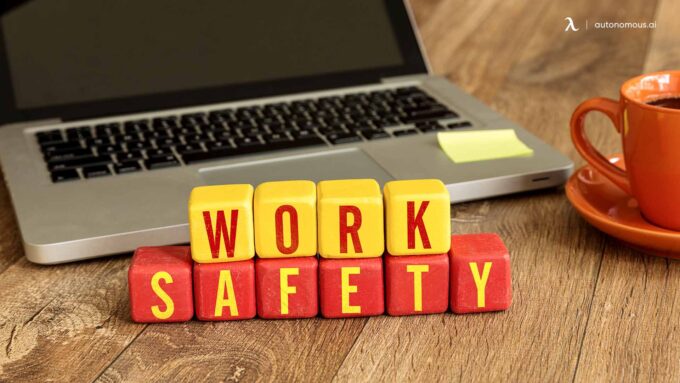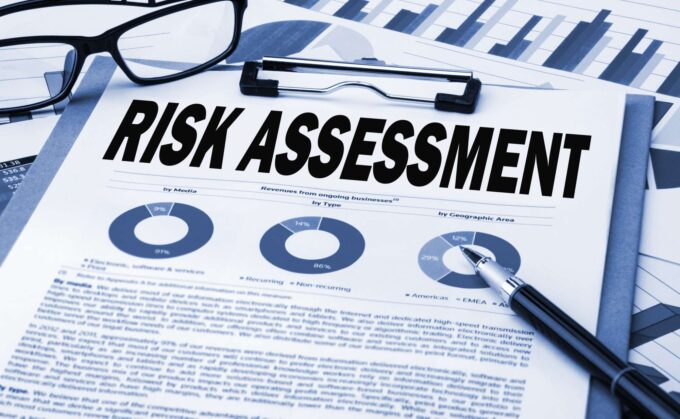In the UK, HSE statistics show that each year, over a million workers are injured or made ill by their work. As an employer, you have a responsibility toward the health and safety of your staff, including preventing injuries.
An injury in the workplace can be devastating and can even result in legal action if the company are found at fault. In worst cases, this could include the involvement of fatal injury solicitors, like Minton Morrill.
It is therefore important that companies take their duty of care very seriously so, in this article, we’ll be sharing ten steps employers can take to help reduce workplace injuries and keep staff and guests safe.
1. Policy and Personnel

Every company, whatever its size, should have a health and safety policy in place as well as an appointed health and safety officer. This doesn’t necessarily need to be a dedicated member of staff but can be an existing employee who is willing to undertake training in order to take on the role on top of their current responsibilities. The health and safety policy should be drawn up based on the identification of any potential hazards in the workplace and should be reviewed on a regular basis.
2. Education
While it’s great to have a health and safety policy in place, it doesn’t stop there. All employees should be educated on the company’s health and safety policies and practices and should be given training where applicable.
3. PPE
Where appropriate, an employer should provide adequate personal protective equipment (PPE) to employees and the correct use of this equipment should be mandated in the health and safety policy.
Additionally, regular checks should be made to ensure that this PPE is being used in the correct manner. This is particularly important for businesses where employees are regularly exposed to hazards, such as the building trade.
4. Adequate Staffing

Many businesses are currently tightening their belts due to the economic crisis however, it’s important to still ensure that you have enough employees. An understaffed company puts extra pressure on its employees, and this can often lead to accidents caused by overworked staff. Monitoring staffing levels and encouraging feedback from employees is vital in keeping the workplace safe and injury-free.
5. Clean and Tidy
One of the most common causes of workplace accidents is trips and falls and these can lead to an employee being absent for some time and, in extreme cases, legal action.
Enforcing a tidy workplace policy can help to make sure that objects such as cables and equipment which may cause falls are secured and kept clear of walkways and other areas that employees may need to navigate whilst carrying items.
6. Discourage Shortcuts
As businesses struggle to increase productivity whilst reducing staffing budgets, employees can often be tempted to take shortcuts that allow them to complete tasks faster. Although productivity is important, it’s not as essential as employee safety. For this reason, employers should send out a strong message that all systems and protocols must be followed – even if this means that it takes a little longer to get the job done.
7. Vehicle and Equipment Maintenance

If your business uses equipment or vehicles, it’s vital that these are properly maintained and regularly checked and serviced. Malfunctioning equipment can result in a number of workplace injuries and in extreme cases, can prove fatal.
Similarly, allowing employees to drive vehicles that are not regularly serviced can be incredibly dangerous. Employers should keep records of all vehicles and equipment and regularly update these with the date that they were last inspected and serviced.
8. Disability Support
If your workforce includes employees with physical or mental disabilities, it’s essential that you ensure that your workplace is suitable for these people. This may include a number of different things including providing ramps for easy access or providing specialist equipment to ensure that the employee can perform their job safely.
9. Fire Training
By law, your business must have fire safety protocols in place and every employee should be made aware of these protocols including evacuation procedures. You should also have at least one fire marshal to ensure that the protocols are followed.
Your local fire station will be able to advise on the best place to find fire marshal training in your area. As per the last point, employers and fire marshals are responsible for familiarising themselves with UK laws regarding disabled employees to ensure that these employees are able to be safely evacuated from the building in the event of a fire.
10. Regular Risk Assessments

Carrying out regular risk assessments can help identify any risks within the business before they’re known to be a risk. Risk assessments are a primary management tool in ensuring the health and safety of employees and anyone who comes onto work premises.
Risk assessments should identify potential accidents, hazards and risk within the workplace which would also identify the severity of each concern. The main purpose of any risk assessment is:
- To identify any health and safety hazards and evaluate the risks presented within the workplace.
- To evaluate the effectiveness and suitability of existing control measures.
- To ensure additional controls implemented wherever the remaining risk is considered to be anything other than low.
Employers who carry out regular assessments can ensure that every possible risk, hazard, and potential accident can be prevented.
Building your Business by Protecting your Employees
Safeguarding your employees is the most effective way of safeguarding your business in 2025. When an employee experiences an injury in the workplace due to company negligence or error, it can lead to employee absence, costly court cases and a loss of reputation with customers.
In the UK, there are a number of rules and regulations in place which businesses must adhere to in order to stay on the right side of the law. It’s important that company owners and health and safety professionals make themselves aware of these.









